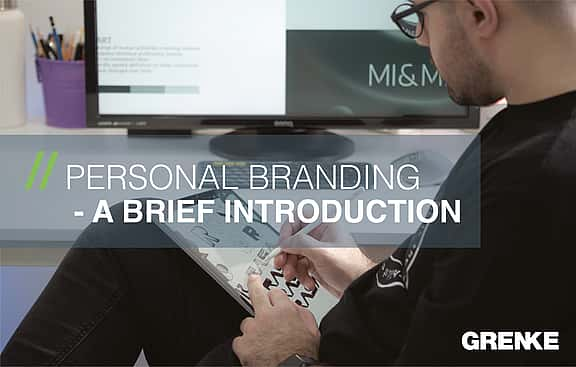Personal Branding is a presentation of a person’s skills, personality, experience, and interests. Personal branding is a way to communicate an individual’s story online, and it can inform others about a person’s attitudes, tastes, and values.
Personal Branding on Social Media
Unlike business branding, personal branding doesn’t require advertising. It can be done on social media. The difference between branding and mere posting or chatting is that the person focuses on making an impression that is unique and memorable.
The most powerful way to do personal branding is by creating consistent messages across all social media channels. Combining chat, posts, and images into a cohesive story makes a strong impression. Consistently repeating the ideas multiplies the number of people who will see them.
Why Create a Personal Brand?
There are several reasons a person may want to create and control a personal brand.
Become an Influencer
Personal branding can help create a reputation for specialised knowledge, judgement, and expertise. This can be important for those who want to gain prominence in business or social movements. However, the focus doesn’t have to be on a national or international scale. Personal branding can build a reputation in a neighbourhood, job niche, or city.
Build Trust
It is essential to build a trust network. Instead of randomly accepting friend requests or followers, a personal brander chooses who will be in the network based on positive reactions to brand messaging.
Once trust is built, it must be maintained. Rewriting and rewording core messages can reinforce confidence and expose the personal brand to new users. In short, building trust takes time and repetition.
How to Create a Personal Brand
Follow some guidelines to make sure your branding is effective.
Have All Social Accounts Verified
Many social media sites offer a process of verification. This allows people to prove their identities. With so many fake accounts on social media, verification goes a long way towards building trust and confidence in a person’s message.
Get a Wikipedia page
Having a Wikipedia presence can boost a reputation. A biography page can list important details, accomplishments, and awards.
These are the steps to creating a Wikipedia biography page:
1. Open a Wikipedia account.
This is free and is simply a matter of filling out a form.
2. Develop a Wikipedia reputation.
The personal brander must publish at least seven edits on relevant pages. “Relevant” means those that relate to a person’s area of expertise or interest.
3. Wait four days.
The account must be open for at least four days before a person can create a biography.
4. Choose a title for the page.
The site walks users through the process of determining if the page title is available.
5. Create the page by clicking the red link on the title-availability page.
Write the biography using the biography template.
6. Submit the page for approval.
7. Update the page regularly.
Get Featured In The Press
A person doing personal branding should contact reporters and article writers whenever a significant event involves the brander. Press can also be generated about new initiatives and awards.
Create a Personal Website
This website serves as an “online business card." It provides details about the person, including accomplishments, degrees, awards, and articles published.
Create a Personal Blog
A blog gets updated more often than a website. New articles can be published every day, week, or month. Constant publishing improves Google rankings, so people will be more likely to find the blog.
Contribute to Other Websites and Blog
Guest-posting spreads the brander’s reputation and influence.
A Single Look and Feel
Branding is as much about visuals as it is content.
Choosing a set of colours to be used on all social media, websites, and the blogging platform helps people remember the individual and the message. This colour consistency also applies to business cards and email.
A logo helps as well. Include a logo in all correspondence and posts. Many freelancers provide logos at a reasonable cost.
Use the same font for all text and format each communication in a similar manner.
The tone of voice should also be consistent. Whether it is lighthearted, formal, humourous, or technical, the “voice” of the writing should be the same throughout all posts, articles, and chats.
Photographs should also show a consistent look. If a person wants to be regarded as professional, candid photos in shorts and swimsuits can make a bad impression.
The image may not need to be professional at all if the brander wants a “folksy” look. This might apply to someone in fields such as cooking, pet care, and so on. Choose a consistent look within the area of expertise or interest.
Putting Everything Together for a Personal Brand
Choosing a message, a look, and a set of values to communicate requires some reflection and introspection. The urge to create a personal brand is no doubt based on thoughts and feelings that have been simmering for a while. Reflection should focus on not only what the audience wants to hear but also what the brander wants to say.
How can we help?
One of the best was to be unique is to be on the cutting edge of your industry. If you have your eye on new equipment for the new year, talk to us about your finance options today.






